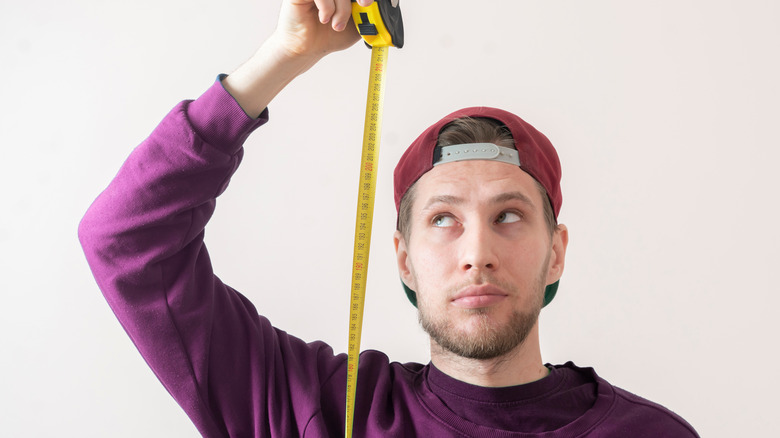The Unexpected Way Height Can Impact Your Likelihood Of Getting Blood Clots
If you've read the statistics on blood clots, you'll know how important early detection and prevention are. Blood clots can affect anyone of any age, reports the U.S. Centers for Disease Control and Prevention (CDC). Also known as venous thromboembolism (VTE), 900,000 people in the U.S. develop blood clots annually. While blood coagulation is an essential bodily function needed to prevent excessive bleeding, a blood clot becomes semi-solid within the walls of a blood vessel. According to experts at the University of Michigan Health, when these clots don't break up on their own, they can cause blood flow blockages. These clots can then become life-threatening.
According to the CDC, blood clots are responsible for up to 100,000 deaths per year in the U.S. Therefore, it's important to know the factors that may put us at an increased risk for developing venous thromboembolism (VTE). Such factors include long periods of inactivity, blood vessel injury, pregnancy, obesity, cancer, being over the age of 60, and taking certain birth control pills. Some studies have even suggested that height may also increase our chances of developing blood clots. How is this so, and just how tall must you be to be considered at risk?
The relationship between blood clots and leg length
Researchers from a 2017 study published in Circulation: Cardiovascular Genetics gathered health data from over 1 million men and 1 million women in Sweden with no prior history of VTE. The men involved in the study had been born between 1951 and 1992, while the women in the study had experienced one prior pregnancy (per CNN). Researchers also compiled health data from siblings in regards to height and the development of blood clots over a follow-up period spanning several years. Findings revealed that men over 6 feet, 2 inches were 65% more prone to blood clots than those under 5 feet, 3 inches. A similar correlation was observed in women as well.
"It could just be that because taller individuals have longer leg veins, there is more surface area where problems can occur," said the lead researcher on the study, Dr. Bengt Zöller, in a public statement reported via Healthline. "There is also more gravitational pressure in leg veins of taller persons that can increase the risk of blood flow slowing or temporarily stopping."
How to lower your risk for blood clots
However, an alternate study published in Thrombosis and Haemostasis suggests that leg length may actually be the predominant contributing factor to the correlation between height and blood clots, rather than one's full-body height. Researchers measured the leg length of nearly 22,000 people over the age of 45. During an average 16-year follow-up period, researchers tallied 641 cases of VTE that had developed. They determined that participants with the longest legs were nearly 60% more likely to develop the condition, while the tallest individuals were 45% more likely.
Experts at the Cleveland Clinic suggest that individuals can reduce their risk of blood clots by implementing certain lifestyle choices. Preventative measures include refraining from smoking, getting regular exercise, staying hydrated, eating a healthy diet, maintaining a healthy weight, treating high blood pressure or diabetes, and keeping up with routine cancer screenings. Blood clots require immediate emergency medical care. Be sure to head to the nearest hospital if you experience sudden difficulty breathing, chest pain, or vision or speaking impairments.



